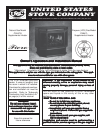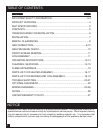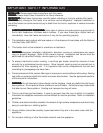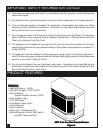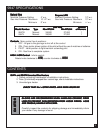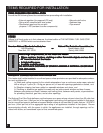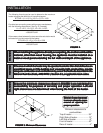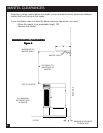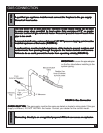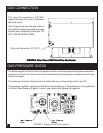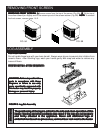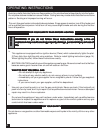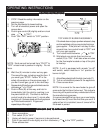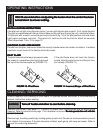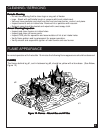
9
Connecting directly to an unregulated propane/LPG tank can cause an explosion.Connecting directly to an unregulated propane/LPG tank can cause an explosion.
Connecting directly to an unregulated propane/LPG tank can cause an explosion.Connecting directly to an unregulated propane/LPG tank can cause an explosion.
Connecting directly to an unregulated propane/LPG tank can cause an explosion.
CHECK GAS TYPE:CHECK GAS TYPE:
CHECK GAS TYPE:CHECK GAS TYPE:
CHECK GAS TYPE: The gas supply must be the same as stated on heater's rating plate. If the gas
supply is different, DO NOT INSTALL the heater. Contact your dealer for the correct model.
IMPORTANT:IMPORTANT:
IMPORTANT:IMPORTANT:
IMPORTANT: Loosen the pipe adapter
on the flex tube before installing to the
system piping.
FIGURE 5. Gas ConnectionFIGURE 5. Gas Connection
FIGURE 5. Gas ConnectionFIGURE 5. Gas Connection
FIGURE 5. Gas Connection
A qualified gas appliance installer must connect the fireplace to the gas supply.A qualified gas appliance installer must connect the fireplace to the gas supply.
A qualified gas appliance installer must connect the fireplace to the gas supply.A qualified gas appliance installer must connect the fireplace to the gas supply.
A qualified gas appliance installer must connect the fireplace to the gas supply.
Consult all local codes.Consult all local codes.
Consult all local codes.Consult all local codes.
Consult all local codes.
Use new black iron or steel pipe only. Internally tinned copper tubing can be usedUse new black iron or steel pipe only. Internally tinned copper tubing can be used
Use new black iron or steel pipe only. Internally tinned copper tubing can be usedUse new black iron or steel pipe only. Internally tinned copper tubing can be used
Use new black iron or steel pipe only. Internally tinned copper tubing can be used
in some areas when permitted by local codes. Only use pipe of 1/2" or greaterin some areas when permitted by local codes. Only use pipe of 1/2" or greater
in some areas when permitted by local codes. Only use pipe of 1/2" or greaterin some areas when permitted by local codes. Only use pipe of 1/2" or greater
in some areas when permitted by local codes. Only use pipe of 1/2" or greater
diameter to allow full gas volume to heater. Excessive pressure loss will occur if thediameter to allow full gas volume to heater. Excessive pressure loss will occur if the
diameter to allow full gas volume to heater. Excessive pressure loss will occur if thediameter to allow full gas volume to heater. Excessive pressure loss will occur if the
diameter to allow full gas volume to heater. Excessive pressure loss will occur if the
pipe is too small.pipe is too small.
pipe is too small.pipe is too small.
pipe is too small.
A manual shutoff valve, union and plugged 1/8" NPT pressure tapping point must beA manual shutoff valve, union and plugged 1/8" NPT pressure tapping point must be
A manual shutoff valve, union and plugged 1/8" NPT pressure tapping point must beA manual shutoff valve, union and plugged 1/8" NPT pressure tapping point must be
A manual shutoff valve, union and plugged 1/8" NPT pressure tapping point must be
installed upstream of the heater (FIGURE 5).installed upstream of the heater (FIGURE 5).
installed upstream of the heater (FIGURE 5).installed upstream of the heater (FIGURE 5).
installed upstream of the heater (FIGURE 5).
A sediment trap must be installed upstream of the heater to prevent moisture andA sediment trap must be installed upstream of the heater to prevent moisture and
A sediment trap must be installed upstream of the heater to prevent moisture andA sediment trap must be installed upstream of the heater to prevent moisture and
A sediment trap must be installed upstream of the heater to prevent moisture and
contaminants from passing through the pipe to the heater controls and burners.contaminants from passing through the pipe to the heater controls and burners.
contaminants from passing through the pipe to the heater controls and burners.contaminants from passing through the pipe to the heater controls and burners.
contaminants from passing through the pipe to the heater controls and burners.
Failure to do so could prevent the heater from operating reliably (FIGURE 5).Failure to do so could prevent the heater from operating reliably (FIGURE 5).
Failure to do so could prevent the heater from operating reliably (FIGURE 5).Failure to do so could prevent the heater from operating reliably (FIGURE 5).
Failure to do so could prevent the heater from operating reliably (FIGURE 5).
CAUTIONCAUTION
CAUTIONCAUTION
CAUTION
NOTICENOTICE
NOTICENOTICE
NOTICE
GAS CONNECTION
WW
WW
W
ARNINGARNING
ARNINGARNING
ARNING



